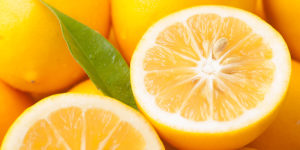
Meyer lemons are said to be a hybrid of lemons and mandarin oranges. The trees tend to be smaller than other varieties, and can even be obtained in a “dwarf” variety. The fruit is smaller, often rounder, and smoother-skinned than traditional lemons. Meyer lemons are a deeper, more orange-toned color than the bright yellow Eureka and Lisbon lemons (both inside and out).
In the early 1900s, the U.S. Department of Agriculture sent Frank N. Meyer, an agricultural explorer, on several trips to Asia with the mission of collecting new plant species. Among more than 2,500 plants that he introduced to the U.S., the Meyer lemon was named in his honor. Meyer would never live to see the success of his namesake, as he died on an expedition near Shanghai in 1918.
Meyer lemons were soon cultivated in the citrus-growing regions of California, Florida, and Texas. In the 1960s, the majority of Meyer lemon trees in California were destroyed by a virus they carried, which threatened the entire citrus industry. Fortunately, one stock was deemed free and clear of disease and became the source for a newly developed "Improved Meyer Lemon" tree.
The most apparent and important difference is the taste. Meyer lemons taste recognizably lemony, but the taste is not quite as bitter as Eurekas or Lisbons. The zest has a slightly floral depth to it. The peel is thinner and there’s much less bitter white pith, which means you can eat the entire fruit (sans seeds) in certain preparations. (If you want to do that, be sure your fruit is organic and untreated with wax or other coatings, or else you’ve scrubbed it well under hot water to dissolve any residue.) Meyer lemons generally contain a much higher volume of juice than other varieties.
Meyer lemon season usually begins in late November or early December and ends by March. When they ripen, some of us go into “lemon mode,” eagerly searching for new recipes for the juice. Lemon bars, lemon drop martinis, lemonade, and limoncello are all popular uses. Click here for recipes submitted by members of the SCSH Desert Gardeners Club.
Prepared by:
Amy Tomlinson
President, SCSH Desert Gardeners Club
